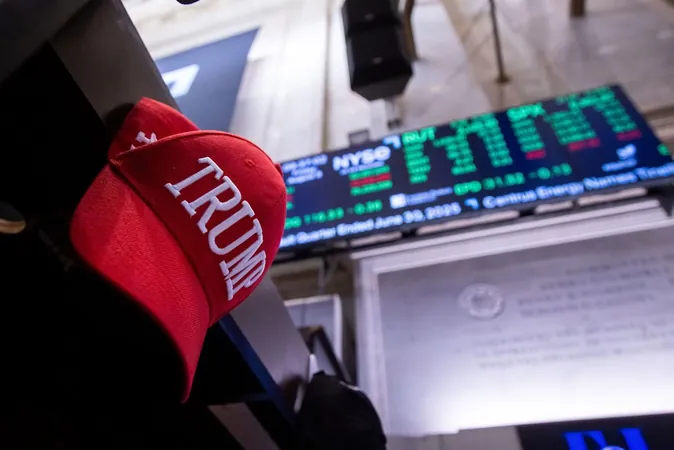
Is Ethereum on the Brink? The Alarming Liquidity Imbalance That Could Upend Its Economy
2025-07-06
Author: Kai
Ethereum is grappling with a hidden crisis that few are daring to discuss.
The Shadows of Dependence: Who's Really in Charge?
As the backbone of much of the cryptocurrency ecosystem, Ethereum [ETH] is currently home to over $127 billion in stablecoins, with Tether [USDT] dominating that figure by contributing more than 50%. This liquidity fuels various avenues within DeFi, staking, and yield farming.
The Dangerous Discrepancy: A Growing Imbalance
However, a troubling trend is emerging. The growth of stablecoins is outpacing Ethereum’s own market value, raising serious questions about its ability to maintain the decentralization that was foundational to its design.
A Scaling Paradox: The Economic Model Under Threat
At the start of 2025, Ethereum had $110 billion worth of stablecoins circulating. By mid-year, that number skyrocketed to $127 billion—a staggering $17 billion increase in just six months. Tether alone accounts for $64.36 billion of this supply, which is 40.36% of its total $160 billion market cap.
Looking toward the future, analysts at JPMorgan predict that the stablecoin market may balloon to a whopping $500 billion by 2028, further solidifying Ethereum’s role as a primary settlement layer. But therein lies the crux of the issue.
The Threat of Centralization: ETH vs. Stablecoins
Despite Ethereum starting 2025 with a robust $400 billion market cap, it has now dwindled to $304 billion, while USDT's supply surged by approximately 15.45%. This gap is alarming. If the value of Ethereum doesn’t rise in tandem with the stablecoins it underpins, its proof-of-stake architecture may falter, increasing reliance on centralized capital.
Are We Watching ETH Dilute Away?
Take USDC, for instance, which is crucial in Ethereum's DeFi landscape. Platforms like Aave and Compound consider it core collateral, while DAOs and institutions leverage it for capital management. However, much of this liquidity is controlled by central entities, primarily Circle.
As stablecoin supply burgeons, Ethereum’s DeFi volume has plummeted to $6.8 billion, down from a high of $30 billion earlier this year. This underscores a critical imbalance in Ethereum’s economic framework.
The Shift in Capital: A Warning Sign for Decentralization
This divergence indicates that capital is increasingly flowing into stablecoins—externally governed assets—rather than Ethereum itself. More users are prioritizing stablecoins for lending, staking, and capital movement, effectively bypassing ETH.
As this trend continues, demand for ETH wanes, making it increasingly difficult to uphold the decentralization ethos, and putting pressure on its market cap. The question remains: can Ethereum rectify this imbalance before it’s too late?




 Brasil (PT)
Brasil (PT)
 Canada (EN)
Canada (EN)
 Chile (ES)
Chile (ES)
 Česko (CS)
Česko (CS)
 대한민국 (KO)
대한민국 (KO)
 España (ES)
España (ES)
 France (FR)
France (FR)
 Hong Kong (EN)
Hong Kong (EN)
 Italia (IT)
Italia (IT)
 日本 (JA)
日本 (JA)
 Magyarország (HU)
Magyarország (HU)
 Norge (NO)
Norge (NO)
 Polska (PL)
Polska (PL)
 Schweiz (DE)
Schweiz (DE)
 Singapore (EN)
Singapore (EN)
 Sverige (SV)
Sverige (SV)
 Suomi (FI)
Suomi (FI)
 Türkiye (TR)
Türkiye (TR)
 الإمارات العربية المتحدة (AR)
الإمارات العربية المتحدة (AR)